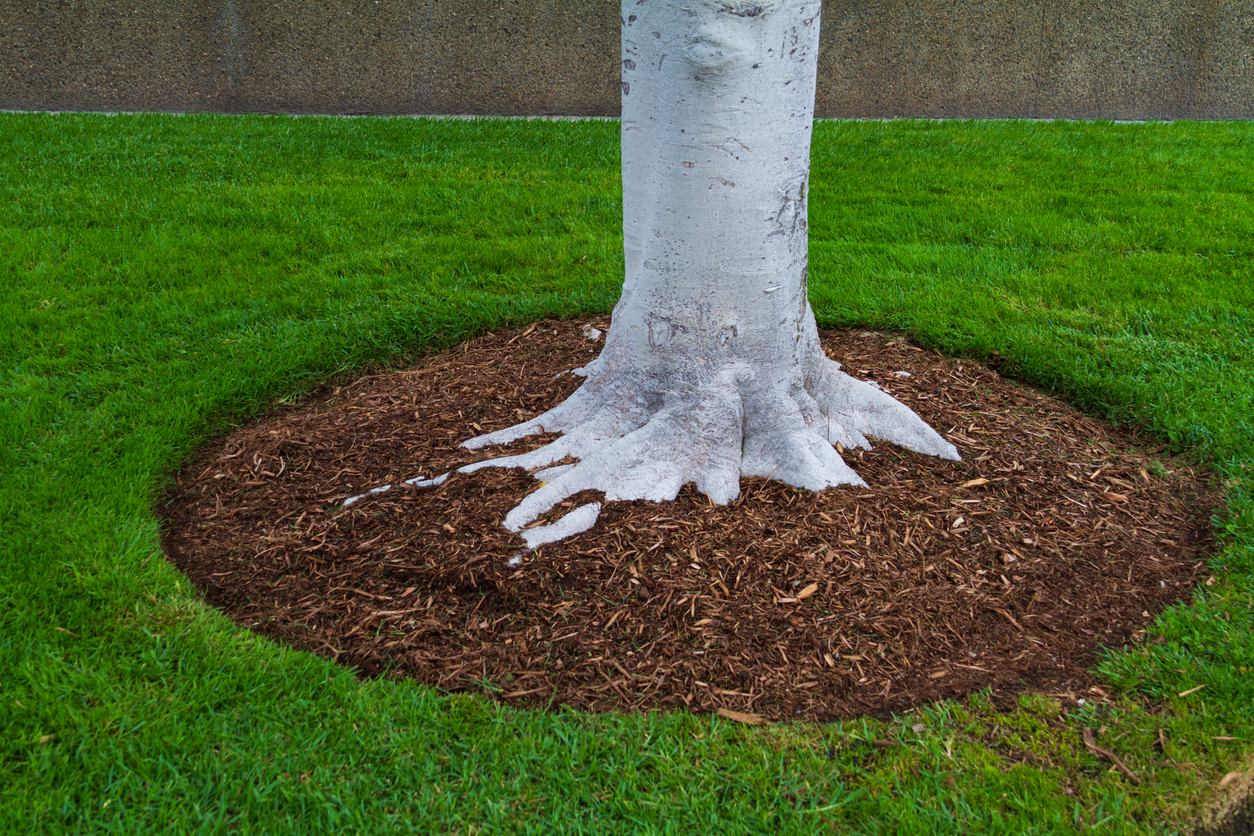K-State horticulture expert suggests organic mulch around diameter of the tree
Homeowners who are looking for ways to promote healthy, growing trees in their yard are well-advised to remember this axiom: A ring is a tree’s best friend.
Kansas State University horticulture expert Cynthia Domenghini said a mulch ring is a circular border surrounding the base of a tree. When planting a new tree, she recommends including a mulch ring that covers the soil beneath the tree canopy.
“One benefit of using a mulch ring around trees in a lawn area is to prevent maintenance equipment from coming too close and damaging the trunk,” she said. “Also, plants grown directly beneath the tree canopy compete for water and nutrients, so a mulch ring keeps that soil covered without creating competition for the tree.”
Domenghini suggests using organic mulch, “for the same reasons it is selected for planter beds,” she said. Those reasons include conserving and extending available water, protecting from soil erosion, and reducing competition by suppressing weeds.
“The mulch ring around trees in a lawn should be at least 3-6 feet in diameter depending on the overall size of the tree,” Domenghini said. “Ideally, the mulch ring should extend to the drip line of the tree, which means the ground beneath the entire canopy of the tree should be covered.”
The mulch ring should include a 4-6 inch diameter circle of bare soil at the center so that mulch is not right up next to the trunk, to prevent rotting. The mulch should be 2-4 inches deep and re-applied annually.
“If mulch is applied too deep (more than four inches), the mulch can actually restrict oxygen from the soil and negatively affect the tree’s root development,” Domenghini said.
Domenghini and her colleagues in K-State’s Department of Horticulture and Natural Resources produce a weekly Horticulture Newsletter with tips for maintaining home landscapes and gardens.
Interested persons can subscribe to the newsletter, as well as send their garden and yard-related questions to Domenghini at [email protected], or contact your local K-State Research and Extension office.
PHOTO: Tree trunk base with mulch and green grass (iStock – sanfel)




